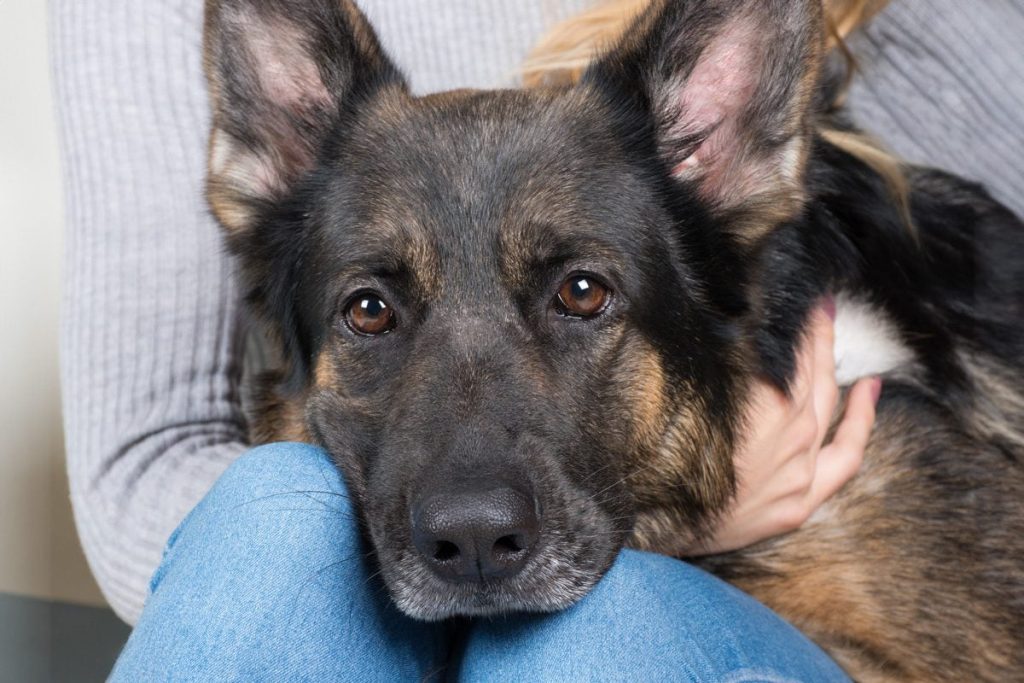Understanding Pet Body Language Decipher What Your Pets Feel

Understanding the Silent Expressions of Our Pets
Animals express their feelings and emotions primarily through body language, and recognizing these signals is crucial for pet owners. Understanding your pet’s body language can lead to a deeper bond and a healthier, happier relationship. By interpreting their non-verbal cues, you can better address their needs and reduce anxiety or stress.
Why Pet Body Language Matters
- Emotional Connection: The ability to understand your pet helps strengthen the bond between you.
- Behavior Management: Recognizing signs of discomfort or aggression can prevent accidents.
- Health Indicators: Changes in body language can indicate health issues that require attention.
Stay tuned as we explore the Top 5 essential body language signals in pets, arming you with knowledge that can transform your interactions and enhance your companionship. Understanding these signs will not only improve communication but also ensure a fulfilling life for your furry friends.
DON’T MISS: Click here to discover essential travel gear
Top 5: Understanding Your Pet’s Body Language
Animals, much like humans, communicate their feelings and intentions through body language. However, unlike humans who rely heavily on verbal communication, animals use a more comprehensive array of physical signals to convey their emotions and intentions. While we may not always realize it, our pets express a wide range of emotions through their posture, movements, and expressions. Understanding these cues serves as a gateway to a deeper connection with our pets, allowing us to communicate more effectively and respond appropriately to their needs. In this exploration, we present the top five essential aspects of understanding the body language of pets, ranked from least to most important. This knowledge not only enriches the human-pet relationship but also ensures the safety and emotional well-being of our furry companions.
5. Tail Position and Movement
The position and movement of your pet’s tail can reveal a lot about their emotional state. For many animals, especially dogs and cats, the tail serves as a critical communication tool. Observing the tail’s position can be insightful. For instance, a dog with a high and wagging tail often displays excitement or happiness—a sure signal that they are pleased or enthusiastic about the current interaction or activity. Meanwhile, a neutral tail position often signifies contentment and relaxation, signaling that your pet is at ease and comfortable.

Understanding negative emotions through tail language is equally crucial. A low-hanging or tucked tail can imply fear or submission, indicating that your pet is feeling scared or uneasy. Dogs experiencing indecision or uncertainty may wag their tails slowly from side to side. For cats, a twitching tail can indicate irritation or agitation.
While tail language is an essential indicator, it is important to consider it along with other body language signs to get a complete picture of your pet’s feelings. Each pet has its individual nuances, so learning your specific pet’s cues over time is invaluable.
4. Ear Movements
The ears of your pet can tell you more than you might think. Different ear positions reflect various emotional states; for example, a dog with perked-up ears is usually attentive or curious, ready to learn more about their surroundings or interact with stimuli. On the contrary, ears that droop or lay flat against the head can signal fear or submission, indicating they might feel threatened or uneasy.
Cats showcase their feelings through ear movements as well. A straightforward positioning of cat ears often represents curiosity or alertness, as if eavesdropping on the environment for any interesting sounds. In scenarios of agitation, cat ears may swivel or retract backward as a defensive or warning gesture. This ability to rotate their ears allows them to pinpoint sounds, a testament to their acute awareness.
By paying attention to your pet’s ears, you may begin to notice subtle changes that indicate their mood and feelings, enhancing your understanding of your furry friend. Combining ear cues with other body signals offers a clearer emotional map.
3. Facial Expressions
The face of your pet is another canvas of emotions. Just like humans, animals express feelings through their facial features. Dogs may display a relaxed face when happy. Their eyes often have a soft expression or a slight squint, accompanied by a partially open mouth—signs indicating they are in a comfortable state. Conversely, stressed or fearful dogs may have a tense facial expression with wide-open eyes, raised eyebrows, and a tight mouth, sometimes bared teeth indicating aggression or anxiety.
Cats also express emotions through their facial expressions. Squinting or blinking slowly can be a sign of trust or comfort, often called a “kitty kiss,” which is a sure sign they feel safe in their environment. On the contrary, a cat with its ears flattened and pupils dilated may be readying itself for defense or feeling threatened.
A keen observation of these facial expressions can significantly aid in recognizing how your pet is feeling and may prevent negative interactions. These subtle cues, when understood correctly, can foster a nurturing and respectful relationship between pets and their humans.
2. Posture and Body Stance
Your pet’s posture speaks volumes about their emotional state. For instance, a dog standing tall with its chest out might indicate confidence and a readiness to play or engage. These postures display a sense of assurance and readiness to interact positively. On the flip side, a crouched or lowered stance could reveal fear or anxiety, suggesting the pet is feeling intimidated or overwhelmed by the situation.
Cats express themselves through posture as well. A cat that sits upright with its tail neatly curled around its body generally indicates a feeling of security and contentment. However, if their back is arched and fur standing on end, it likely signals agitation or fear, a defensive posture that makes them appear larger to ward off threats.
Understanding your pet’s posture can make a substantial difference in how you interact with them and how comfortable they feel in your presence. It allows for timely interventions or adjustments in behavior to ensure your pet is comfortable and stress-free.
1. Overall Behavioral Patterns
Ultimately, the most critical aspect of understanding your pet’s body language is recognizing the overall behavioral patterns. This means looking at their actions as a whole rather than focusing on isolated signs. Observing a combination of movements, expressions, and sounds provides a comprehensive view. For example, a relaxed pet lying on its side is typically at ease, while a pet displaying conflicting signals—like a wagging tail coupled with growling—could be indicating uncertainty or discomfort.
These patterns offer an exact understanding of their needs and states of mind, helping to prevent misunderstandings or aggressive incidents. When pet owners grasp these intricate details, they can tailor the environment to suit their pets’ needs, nurturing a bond based on mutual respect and understanding.
Furthermore, understanding these behavioral intricacies can facilitate better training and communication, ensuring a harmonious coexistence. By integrating all these components, pet owners can cultivate a deeper connection, showcasing empathy and proactive care, ensuring not only a healthier bond but an enriched quality of life for their beloved animal companions.
Understanding body language in pets is not just about observing their physical movements but also interpreting their emotional states and needs. The intricacies of animal behavior provide valuable insights into their well-being and can greatly enhance the human-animal bond. By decoding these visual cues, pet owners can respond appropriately, promoting a healthy and happy environment for their companions.One of the most significant aspects of pet body language is the use of posture. For example, a dog with its tail held high and wagging energetically is often expressing excitement and happiness. In contrast, a dog that positions its tail between its legs or crouches low to the ground may be exhibiting fear or submission. Understanding these subtle signals allows pet owners to tailor their interactions, ensuring comfort and security for their pets. Similarly, cats communicate their emotions through their body posture. An arched back combined with raised fur signifies a cat that feels threatened, whereas a cat that rolls onto its back may be indicating trust and seeking affection.Facial expressions also play a crucial role in deciphering how pets feel. Dogs, for instance, have a complex array of facial cues, including ear positioning and eye contact. A relaxed dog will often have a soft gaze and slightly open mouth, contrasting sharply with a dog displaying stress or aggression, which may have hard eyes and a closed mouth. Cats, too, use their facial features to convey feelings; narrowed eyes may signal annoyance or impending aggression, while slow blinking can indicate a cat that feels safe and is comfortable around its owner.Vocalizations also provide valuable insights into emotional states and should not be overlooked. Dogs might bark excitedly when greeting their owners or may whine to express distress. Meanwhile, cats can purr when content but hiss or growl when feeling threatened. Understanding these vocal cues allows owners to assess their pets’ emotional needs more accurately. Additionally, the context in which vocalizations occur is vital; a high-pitched bark may indicate playfulness, while a low growl may serve as a warning.In moments of stress or anxiety, being attentive to behavioral changes is essential. If a pet suddenly starts hiding, becomes less active, or displays avoidance behavior, these signs indicate that they may be experiencing discomfort, fear, or illness. Recognizing these behavioral shifts helps owners take prompt action, ensuring that their pets receive the necessary care and reassurance.As humans, we often anthropomorphize animals, attributing our own emotions to them. However, it is crucial to recognize that pets express their feelings in ways unique to their species. For example, while a wagging tail for a dog is a universal sign of happiness, the same tail movement in a cat might signify excitement but could also stem from overstimulation, leading to aggression if not monitored. Thus, becoming proficient in reading body language requires an understanding of these species-specific behaviors.Engaging with resources such as behaviorists, trainers, or literature focused on animal behavior can further enhance an owner’s ability to interpret their pet’s body language accurately. These resources often provide case studies and examples that illuminate the nuances of animal communication. By investing time in learning about their pet’s emotional expressions, owners not only become better caretakers but also deepen the bond with their beloved companions. This journey of understanding does not just improve the relationship between pets and their owners; it fosters a more harmonious household. Recognizing when a pet is happy, anxious, or in need of comfort creates a supportive environment, allowing both animal and human to thrive together. Such perception can be vital in preventing behavioral issues, leading to a lifetime of mutual respect and affection.
DON’T MISS: Click here for the ultimate travel checklist for your cat
Frequently Asked Questions About Understanding Pet Body Language
How can I tell if my dog is feeling anxious or stressed?
Dogs exhibit a variety of signs when they are anxious. Look out for typical stress indicators such as panting, pacing, whining, or the display of their white eye corners, known as “whale eyes.” Additionally, a tucked tail or pinned back ears can be reliable indicators. Understanding these signs can help you recognize and alleviate your pet’s stress promptly.
What does it mean when my cat’s tail is twitching?
A twitching tail in cats is often a sign of agitation or irritation. Cats communicate a lot through their tails, and a quick flicking motion might indicate that they feel threatened or annoyed. It’s crucial to observe the context of this behavior; if accompanied by other signs like growling or flattened ears, your cat may require space or a change in the environment.
How do I know if my rabbit is happy?
Rabbits have their unique way of expressing joy and contentment. Look for behaviors such as binkying—where the rabbit leaps into the air and twists its body—indicative of happiness. Additionally, a rabbit that is comfortable may display a relaxed posture, with its feet tucked under it while lying down, often seen during relaxation periods.
Is a purring cat always a sign of contentment?
Though purring is commonly associated with a content and happy cat, it’s important to recognize that cats may purr for various reasons, including stress or discomfort. Purring can also be a self-soothing mechanism. Observing the overall body language and context will provide a more accurate understanding of the cat’s emotional state.
What are some signs that my bird is feeling threatened?
Birds can show signs of feeling threatened through specific behaviors. Look for sudden fluffing of feathers, rapid beak clicking, or maintaining an intense, watchful eye. These signs, coupled with possible hissing or attempts to bite, are classic indicators of fear or aggression. Recognizing these signs can help you manage their environment to make it more comfortable.
DON’T MISS: Click here to plan the ultimate adventure with your furry friend
Understanding the Silent Language of Our Pets
In delving into the fascinating world of pet body language, we uncover a silent dialogue carried out by our furry companions, each gesture and movement teeming with meaning. Understanding this complex communication can significantly enhance our bond, providing insight into what our pets feel and need. The main takeaway is that recognizing these non-verbal cues allows us to respond more effectively to their needs, improving their well-being and the harmony within our home.
The Essential Signals in Pet Communication
From the different ways dogs wag their tails to the subtle ear movements of a cat or the feather ruffling in parrots, each species has its own distinct way of expressing emotions. Learning to observe these signals is vital. For instance, a dog’s tail may wag in excitement or tension, depending on additional body gestures. Meanwhile, cats employ a variety of tail positions and sounds to exhibit affection, agitation, or curiosity.
Enhancing Human-Pet Relationships
The essence of decoding pet body language lies in fostering a relationship built on mutual understanding and trust. Gaining insights into their silent language can often prevent misunderstandings that may lead to stress or behavioral issues. By mastering the art of non-verbal cues, pet owners can offer a more compassionate and empathetic environment that acknowledges the emotional life of their animals.
The Continuous Journey of Learning
Decoding the body language of pets is not a one-time task but an ongoing journey into understanding our companions’ silent worlds. As we continue to learn and appreciate these subtleties, we stand to discover the profound layers of feeling and consciousness in animals that many might overlook. This understanding not only improves our relationship with them but enriches our lives as a whole, urging us to consider the myriad ways life communicates around us.


